Oops… I was going to share just a few quick tips for making a travel route in Colombia. Then things got a little out of hand!
You’re now reading my ultimate (and way-too-detailed) Colombia itinerary guide, based on my 3 months in this wonderful country. While many blogs only talk about one specific part of Colombia, I’ll be going more in-depth.
My goal is to explain some of the challenges with planning a Colombia trip. I’ll also show how you can customize some of the common itineraries to make them your own. I hope it will help you better plan your Colombia trip and consider all the different options.
Bookmark this page for later reference!
How to create an itinerary
The problems with Colombia
Before we get into itinerary planning, there are a few things to discuss.
No, I’m not talking about safety! (Colombia is mostly fine.)
The real problem with Colombia that it’s simply too good of a travel destination. Honestly, it’s something you really need to be prepared for.
What do I mean?
Well, it just has so many things to do and places to visit that it’s very easy to feel completely overwhelmed. Trying to ‘do it all’ in Colombia is like trying to drink from a firehose. Even with 3 months in Colombia I still felt like I wasn’t done.
This is quite different from some other countries. You can spend 2 weeks in, say, modestly-sized Guatemala or Ecuador and still keep your FOMO at bay. In Colombia, you’ll surely often agonize over what to include in your itinerary or what to leave out.
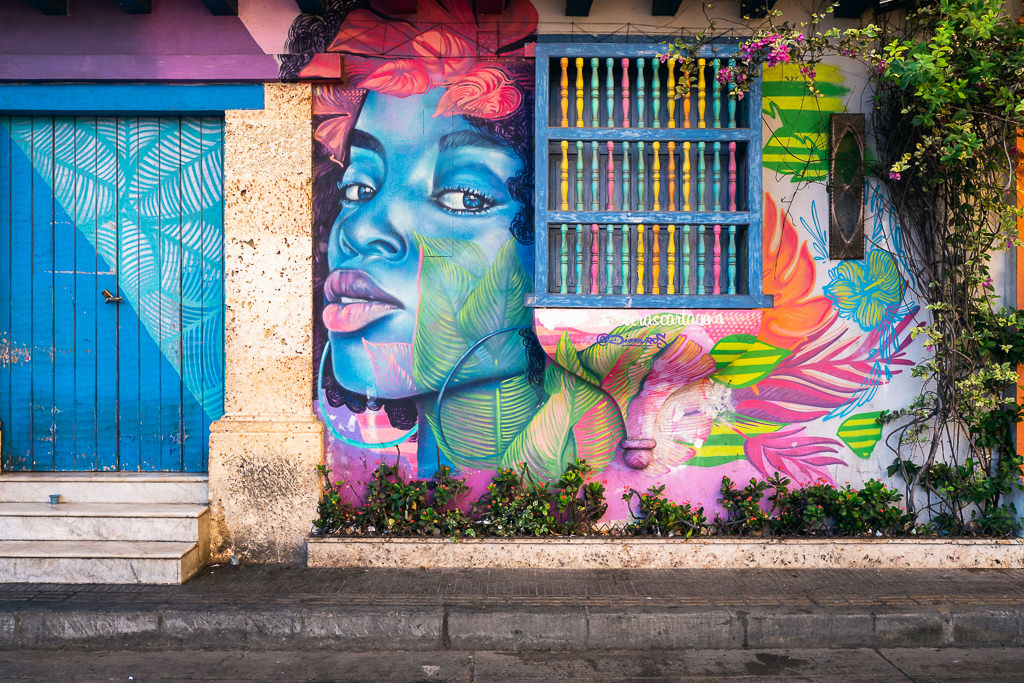
The other issue is simply the distances.
Maybe you get the spontaneous idea to just catch a quick bus from Cartagena in the north to the capital in the center. Oops, it takes 21 hours.
Colombia is not only a big country, but its geography is defined by three mountain ranges that run vertically across it. And mountains means “slow”!
For example, trips in the mountainous coffee region often take longer than expected — at least, if you’re just connecting the dots on a map without checking the actual travel times.
For reference, here are the distances from Bogota by bus:
| Cartagena | 22 hours (overnight) |
| Medellín | 9 hours |
| Santa Marta (for Minca or Tayrona) | 18 hours (overnight) |
| Armenia (for Salento) | 7 hours |
| San Gil | 7 ½ hours |
| Cali | 10 hours |
| Manizales | 8 hours |
| Popayán | 12 hours |
What all this means is that you just have to be smart about your Colombia travel route and plan it well.
But don’t worry! I’ll help you get the most out of your trip to Colombia. And we’ll look at some ready-made itineraries that will work for a shorter trip or that you can piece together for a longer trip.
Plan your Colombia trip
Keeping your route realistic
So, Colombia is big and there’s too much to see. How can you keep your travel route manageable?
Well, there are two ways: taking flights, or focusing on a region.
If you have only one or two weeks, I suggest choosing a specific region and mostly staying in it. That way, you won’t waste too much time in transit and you’ll have much more time during your trip for activities and sightseeing.
If you’re looking for a compact and easy itinerary, you can also check out my other Colombia travel guide for a 1-week trip.
Instead of trying to visit every point on the compass, you can have a fantastic trip by, say, focusing on the Caribbean coast plus a few days in Bogota. That way you’ll get a more complete experience within a part of Colombia instead of an overly hurried or fragmented one.
(I know everyone’s travel style is different though. This is just my recommendation for getting the most enjoyment within a limited time.)
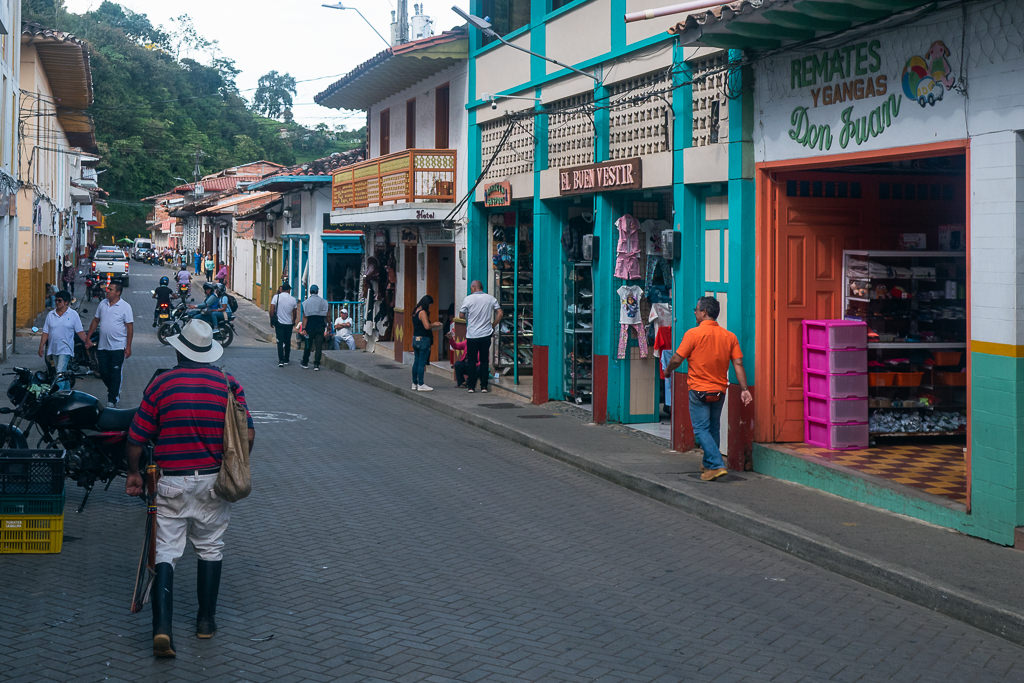
If you have three or four weeks in Colombia, then I think it’s nice to tackle two or three regions. You’ll have a good minimum time for a ‘complete Colombia trip’ of sorts. Of course, that doesn’t mean you’ll see everything it has to offer, but you can definitely see a lot and have an itinerary with a lot of variety.
If you can travel longer than four weeks, then congratulations! You’ll be able to experience Colombia in a way not everyone can. With at least about 6-8 weeks you can really cover most of the highlights in Colombia. This is an ideal timeframe if you’re, say, backpacking in Colombia and really aren’t in a rush.
Taking internal flights can be a good solution for some itineraries. My travel style is usually to go overland, but the convenience and low cost of domestic flights in Colombia make them very tempting. To give you an idea, on my last trip I hopped between Santa Marta to Medellin by air (that’s crossing about half the country) for about $40. This happily avoided a 15-hour bus ride.
Some places in the Amazon or on the Pacific Coast are also unreachable by road, necessitating flights.
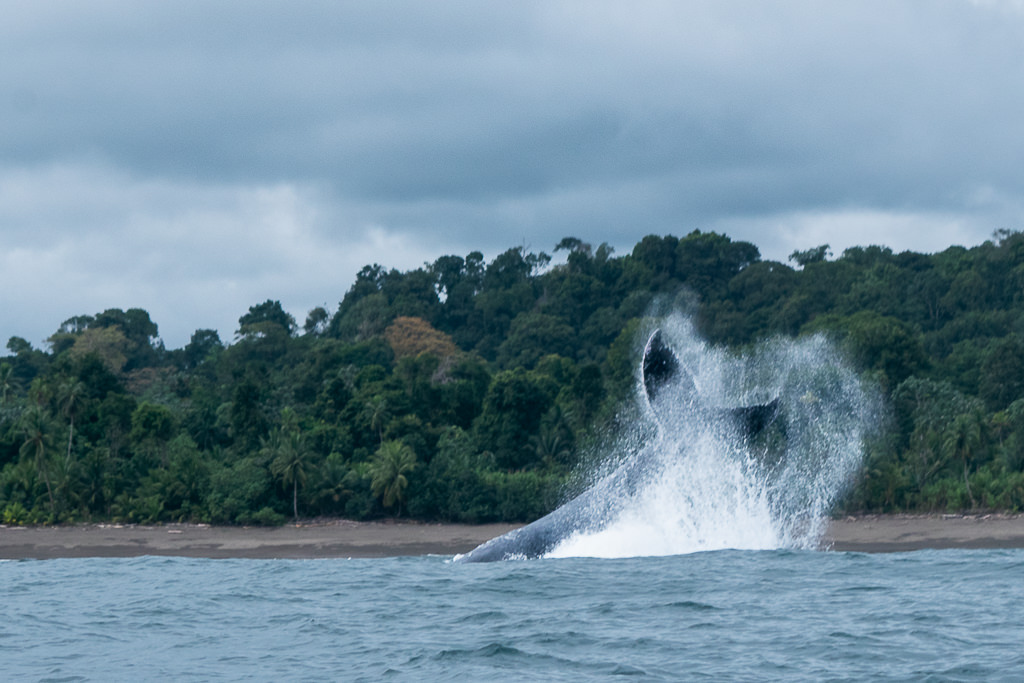
A flight or two can definitely make a bigger travel route in Colombia easier to plan. Of course, you can also get carried away with adding flights.
I sometimes see itineraries posted online where the person is only flying around (e.g. Bogota > Medellin > Santa Marta > Armenia for Salento > etc. all by air). This seems excessive and will mean spending too much time at airports versus time immersing in the travel experience.
While some of the distances can be significant, the bus/coach transport in Colombia is fortunately very good in general.
Another pitfall is only visiting cities. The smaller towns in Colombia have so much charm! They’re also generally safer than the cities, so they have quite a different vibe. The smaller places are definitely not to be overlooked and I always think it’s nice to have a mix of both cities and towns.
The map below shows you the main travel destinations in Colombia and how they can be connected.
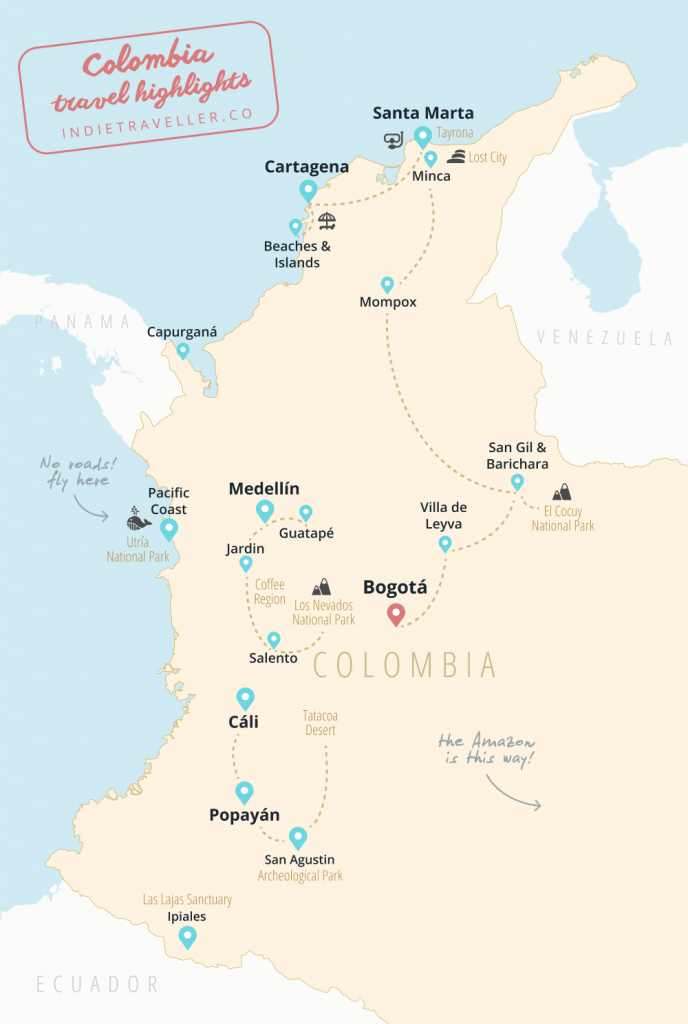
Flying in- and out of Colombia
Before we can travel in Colombia, we have to get there first.
Most travelers will arrive in Bogota simply because it has the largest international airport. The capital is not a bad place to start your trip, but it’s good to know what to expect from Bogota. It’s not a superficially beautiful city, but it is a very interesting one.
Besides Bogota, many other cities also have international airports, including Cartagena, Cali, and Medellín. There are even a few direct flights all the way from Europe to Cartagena. Be sure to check all your options using Google Flights or Skyscanner as this may give you different ideas for how to plan your route.
An interesting option is to fly via Miami. Since it’s super well-connected to the rest of the US, Colombia, as well as Europe, it can be a perfect stepping stone.
On my most recent Colombia trip, I flew from Portugal (where I live) to Miami and then on to Cartagena. On the way back I flew from Cali to Miami to Portugal. This meant I could start and end my trip in different places in Colombia. It let me travel overland in a neat north-to-south direction, without any need to backtrack to Bogota.
My first time coming to Colombia I took a 5-day sailing trip from Panama. This is an amazing experience if you’re backpacking through Latin America!
Overrated or underrated?
Some places in Colombia are super popular, others seem to be barely known. If you like to go a little off the beaten path, you’ll have lots of opportunities.
I thought it’d be interesting to take a survey of Colombia itineraries. I looked at the top 20 itineraries on other sites and tallied how often places are mentioned:
| Place | Mentions | Place | Mentions |
| Bogota | 20 | Tatacoa desert | 4 |
| Cartagena | 19 | Manizales / Los Nevados | 4 |
| Medellin | 18 | San Andres island | 3 |
| Salento | 17 | Islands Near Cartagena | 4 |
| Tayrona Park | 15 | Zona Cafetera | 2 |
| Guatape | 13 | Las Lajas Sanctuary | 2 |
| Santa Marta | 12 | Punta Gallinas | 1 |
| Minca | 8 | Barranquilla | 1 |
| Palomino | 7 | San Cipriano | 1 |
| San Gil | 7 | La Guajira | 1 |
| Taganga | 6 | Leticia (Amazon) | 1 |
| Villa de Leyva | 6 | Jardin | 1 |
| Lost City Trek | 5 | Rincon del Mar | 1 |
| Cali | 5 | Bahia Solano (Pacific Coast) | 1 |
| Popayan | 5 | Filandia | 1 |
| San Agustin | 5 |
As you can see, most sites recommend the same places. Cartagena gets almost 20X more mentions than, say, the incredible Pacific Coast.
This is probably because many travelers do the same 2-week itinerary, which then gets shared again as if it’s the only option. While places are often popular for a reason, it can also be quite self-reinforcing.
Popularity doesn’t always mean ‘best’. It just depends on what you’re looking for. Personally, I like popular destinations like Cartagena, but really love some of the hidden gems further down the list.
Alright, time for some itineraries!
Itinerary 1: the Caribbean coast
The Caribbean coast is 100% where you should go for a tropical holiday feeling. It’s perfect for a first-time visit to Colombia.
If you don’t have much time in Colombia, I suggest reading my 1 week version of this northern Colombia itinerary.
The big appeal of this itinerary is the gorgeous colonial city of Cartagena, which is almost always sunny and (very) hot. It’s become a mainstream vacation destination with high-quality accommodations, high safety levels, and a plethora of tourist-friendly shops and cafes. If you’re looking for a safe family or couples holiday spot in Colombia, this is it. (Just expect it to be a bit of a ‘tourist wonderland’ and not like the rest of Colombia.)
Cartagena is a great starting point, but I think the best parts in the north are around Santa Marta. Minca is the spot for eco jungle retreats and birdwatching trips, while Tayrona National Park has some of Colombia’s most photogenic wild beaches.
Suggested minimum time: 2 weeks
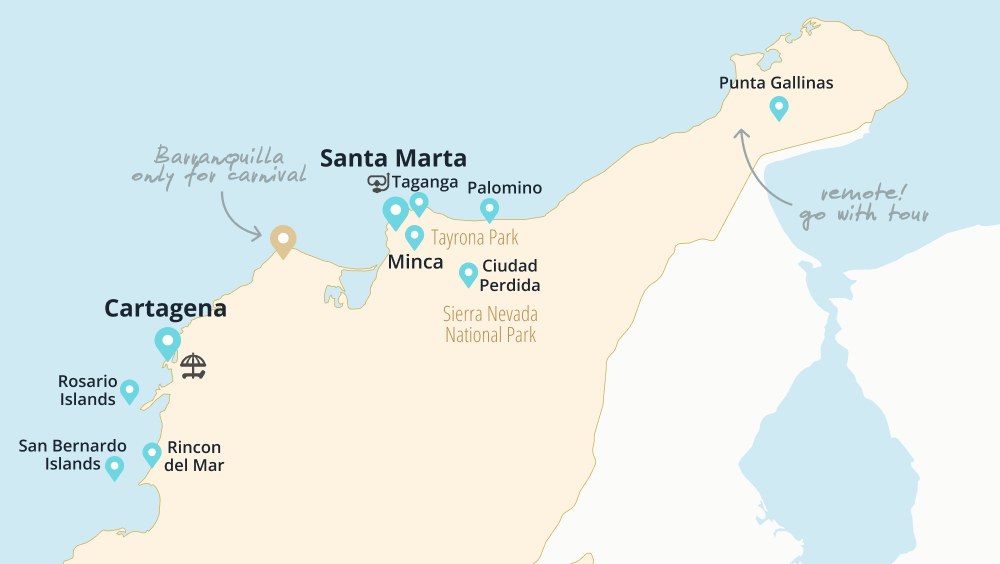
Cartagena (2 days)
I’ve been to colonial old cities all over Latin America and Cartagena is surely the most beautiful. You’ll be stunned by how nicely it’s kept as well, with roses hanging from brightly colored balconies and dazzling street art enlivening the walls in the trendy neighborhood of Getsemani.
You can stay in Cartagena on any budget, but you’ll get the most out of it if you enjoy the finer things. Inside its old city walls, just about everything is ‘artisanal’, ‘gastro’, or ‘craft’. Some of the most beautiful boutique hotels in Colombia can also be found in Cartagena. The city is a bit more expensive than elsewhere, but there are still plenty of budget options too.
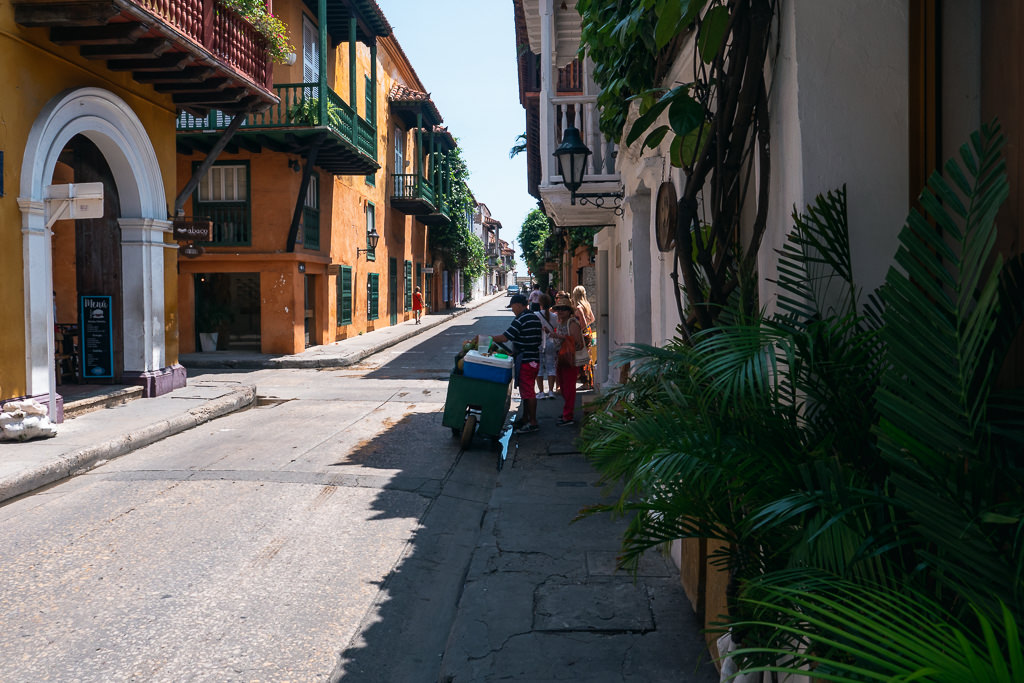
In the colonial days, huge fleets would take gold and other goods from Cartagena to Spain. Today, the old city is affluent and rather safe, as the peninsula of Bocagrande with its many high-rise apartments that look like a mini-Miami. Outer neighborhoods are a lot rougher around the edges (though you’re unlikely to visit them).
You can wander the old city and the fortifications, take a street food tour, go shopping, or swim inside a mud volcano (a cheesy but fun tour).
Cartagena is also the perfect launching pad for trips to various nearby islands and beaches.
Beaches & islands near Cartagena (2 days)
Fair warning: the beaches immediately in- and around Cartagena are awful (e.g. Playas de Crespo near the airport is just… no). But the beaches get very good further out from the city. Expect turquoise waters and tropical fishes swimming by.
If you’re not too picky or in a rush, hit up Isla de Tierra Bomba, the island just 30 minutes from the old city. It’s quite commercial but will tick the box. For somewhat quieter beaches, go to the Rosario islands (1 hr by boat) or the peninsula of Baru. For yet more seclusion, go to the San Bernardo islands (2 hours by boat from Cartagena).
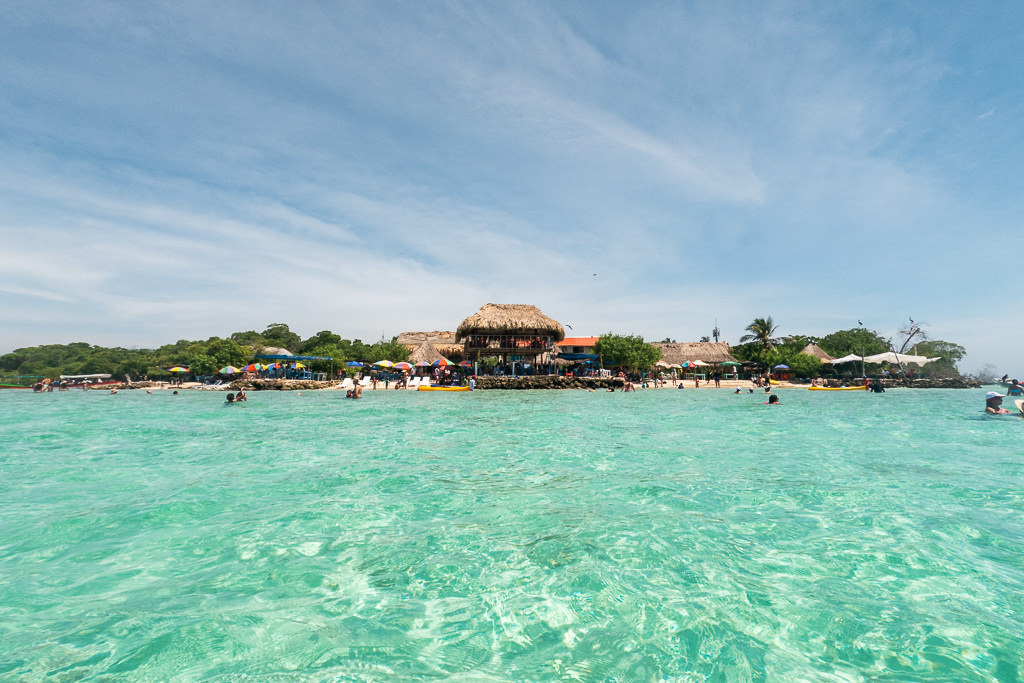
The island experience is best on weekdays as on the weekends many Colombians will arrive on weekend trips, making it more crowded.
You can visit the islands and beaches with boat tours and day trips, but it’s worth staying overnight so that you get to hang out past the afternoon rush and can watch the beautiful sunsets.
Minca (3 days)
Minca burst onto the travel scene around 2015 when a new road made it more accessible. The mountain town became the go-to ecotourism destination in Colombia and despite becoming more popular it hasn’t lost its charm at all.
It’s a haven for birdwatching, hiking, organic coffee farm visits, and more. You reach Minca easily via the city Santa Marta (it’s about 30 minutes).
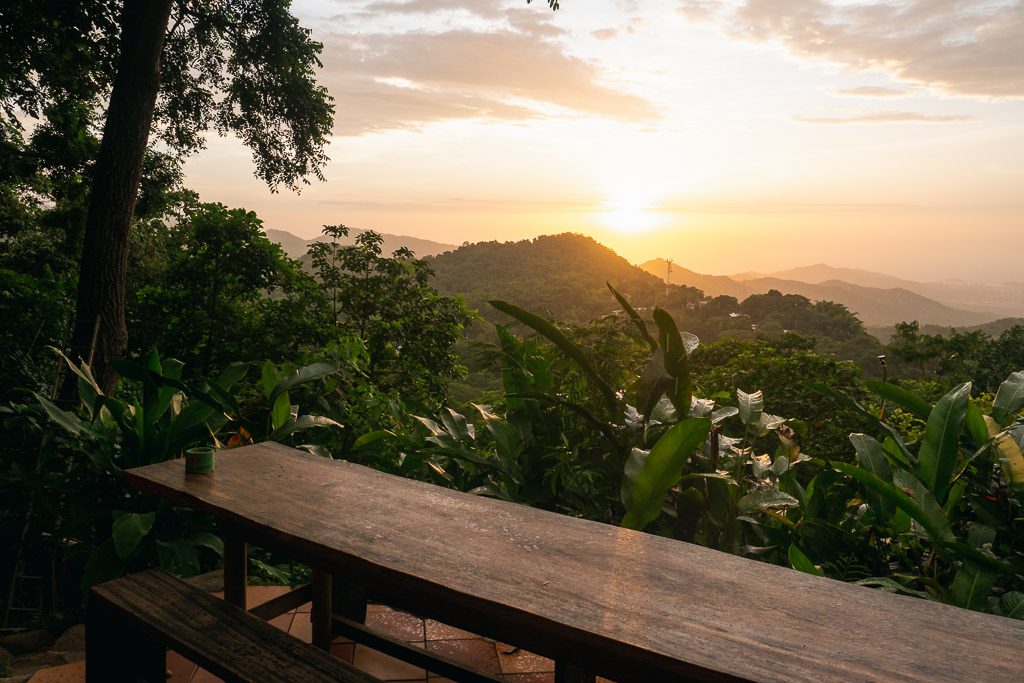
It’s best to stay at least somewhat outside the town center for the best views and the most serenity. My guide to the best ecolodges and hostels in Minca will tell you more.
If you’re even remotely interested in seeing tropical birds, go on the highly-rated Jungle Joe birdwatching tour. I’m not a bird-watching fanatic yet I still thought it was an incredible experience. Spotting my first toucan was definitely very memorable.
There are many hiking trails and waterfalls in the area. The atmosphere in Minca and its sweeping jungle canopy views are also an experience in itself. It seems many travellers end up staying a night or two longer than planned.
Tayrona National Park (1-2 day)
Colombia’s most famous national park encompasses several extremely scenic beaches — of which Playa Del Cabo is the best known. Tayrona is stunning, though it’s become a bit of an iconic place in Colombia, so it can be pretty busy at times. This is not really an issue, just don’t expect it to be a totally quiet wilderness.
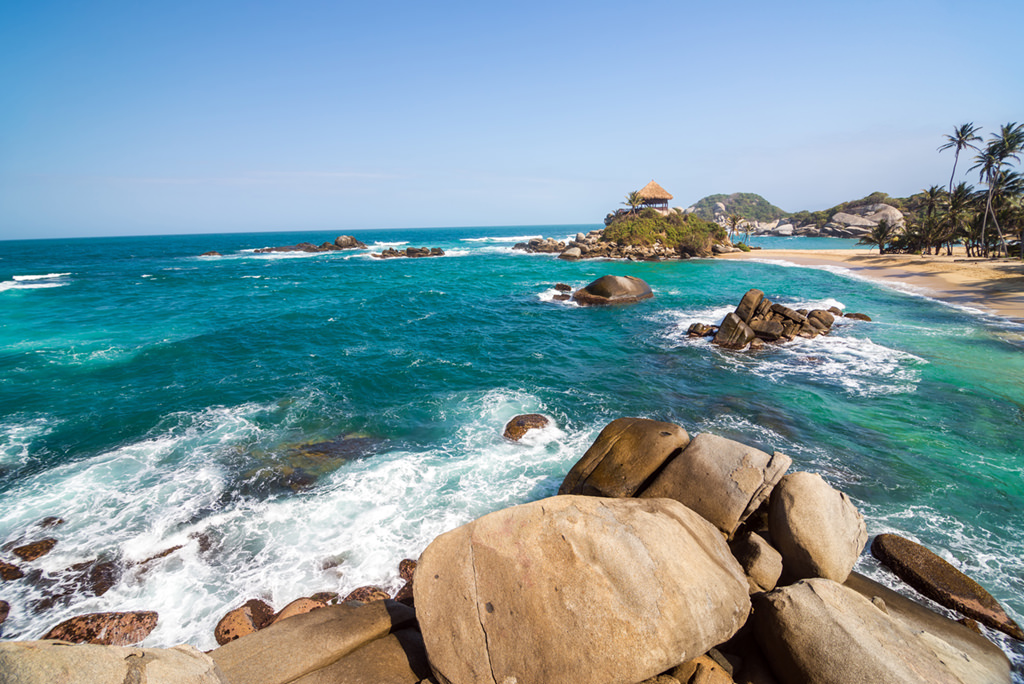
A popular activity among backpackers is to stay the night at Playa Del Cabo in a hammock under just a corrugated metal roof. I haven’t done this but heard mixed reviews (mainly to do with the cold wind), so read up on it to see if it’s something you’d like. Alternatively, you can stay on the edge of the park in an eco-resort or hostel and then do a morning hike to the beach.
Many beaches in Tayrona are not suited for swimming due to the currents. Playa Concha is close to Santa Marta and is more of a swimming beach.
Palomino or similar (2-3 days)
For some easy beach time simply look to the entire stretch of coast east of Tayrona Park. Palomina is a bit of a hot spot here; in terms of vibe think of a “backpacker beach place in Thailand” except a fair bit more laidback. Put your feet in the sand and a beer in your hand.
For somewhere a bit more low-key, check out the area around the eastern edge of Tayrona. Search the map for ‘Playa Los Angeles’ or “Trompito’. The whole area around here is sprinkled with ecolodges, hostels, glamping, and farm stays.
More on the Caribbean Coast
There is enough to do in the north to fill up a whole month! Here are some ways you can extend your itinerary.
Ciudad Perdida (or Lost City) is an ancient ruin inside the Sierra Nevada National Park. If you have 4 or 5 days to spare and love the outdoors, then consider the Lost City trek. It passes through indigenous lands and ends at the ruins of a pre-Columbian civilization. You can only do this as part of an official group tour. It does take many days and costs 1400000 COP per person (roughly 300 Euros or Dollars), so consider if the Lost City is worth it for you. My Lost City trek guide will give you all the details. You can book this multi-day trek here.

Many use the city of Santa Marta only to transit to Tayrona Park or Minca. It’s a more ‘normal’ modern city and doesn’t have that much for tourists, but it can still serve as a nice base. It has a marina, a good city beach (at Playa El Rodadero), a small historical area, and many great accommodation options. I once stayed for 5 nights in Santa Marta simply because I was in a fun hostel and met some locals who showed me around.
The valley of Paso Del Mango is a little-known alternative to Minca. It’s more isolated in the jungle, though it has only a few accommodation options. Finca Carpe Diem is the main base in Paso Del Mango.
Taganga, a village by a bay just north of Santa Marta, is the place to learn to scuba dive. It has some of the cheapest dive school packages in Colombia — or anywhere, really. A 3-day basic certification course costs about 700000 COP, while a half-day introduction to diving costs about 200000 COP. The reefs might not impress more experienced divers, but they are perfect for your training dives. Taganga can be a bit of a shabby place, so some may prefer to stay in nearby Santa Marta.
Barranquilla is quite an industrial city with a poor reputation for safety. I wouldn’t bother with it normally, though the carnival in February makes a big exception. It’s actually the second-biggest carnival parade after Rio de Janeiro. Do watch your belongings carefully as it’s truly a carnival of pickpocketing as well. Be especially alert if you find yourself temporarily blinded by soap bubbles sprayed from aerosol cans during the celebrations. But if you take some care then it’s an unforgettable event.
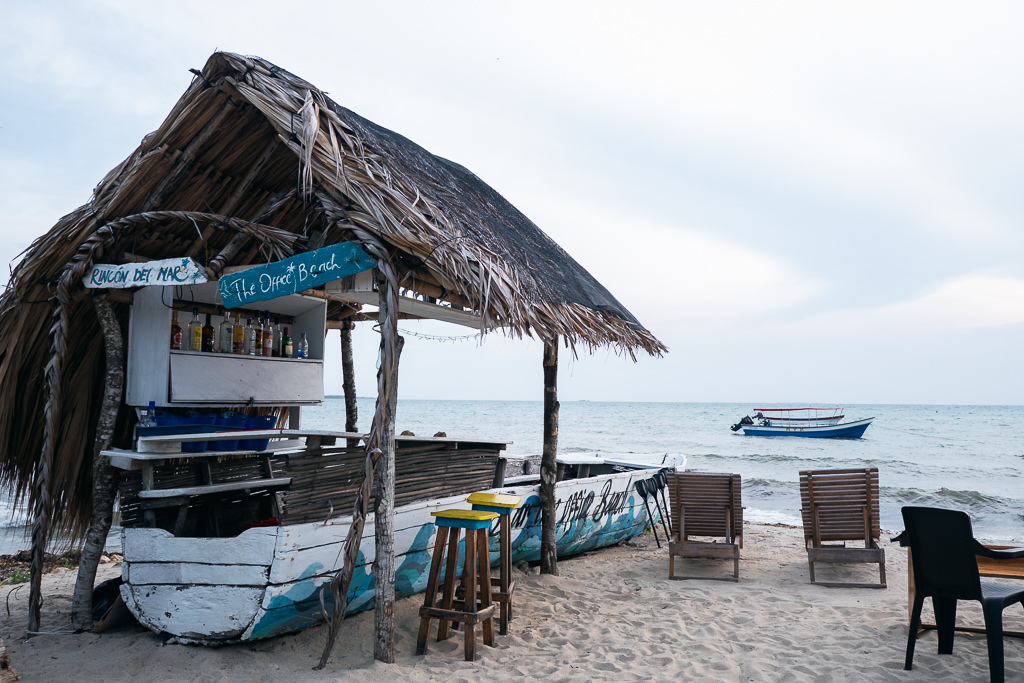
Rincon Del Mar is a laidback place by the beach about 3 hours south of Cartagena. It’ll probably stay quite laidback as it’s somewhat out of the way, but the in-the-know travellers make it there and love it for its friendly atmosphere. From Rincon, you can visit the San Bernardo islands on a boat trip and see bioluminescent plankton sparkle in the waters in a nearby lagoon. If a low-key vibe is your sort of thing, you won’t regret going to Rincon (shhhhh, it is secretly also my favorite beach in north Colombia!).
Finally, Punta Gallinas is the furthest northern point of Colombia. It shows a very different side of Colombia. There are sand-dune deserts and (very poor) indigenous villages. It’s difficult to visit on your own so it’s best done on a 2 or 3-day organized tour.
Itinerary 2: from North to Bogota
The regions of Colombia are separated by considerable distances. If you want to travel overland from Cartegena to Bogota, it will take a dispiriting 21 hours. Many will decide to fly across, but if you have time, you can also break up the overland journey with some amazing stops along the way.
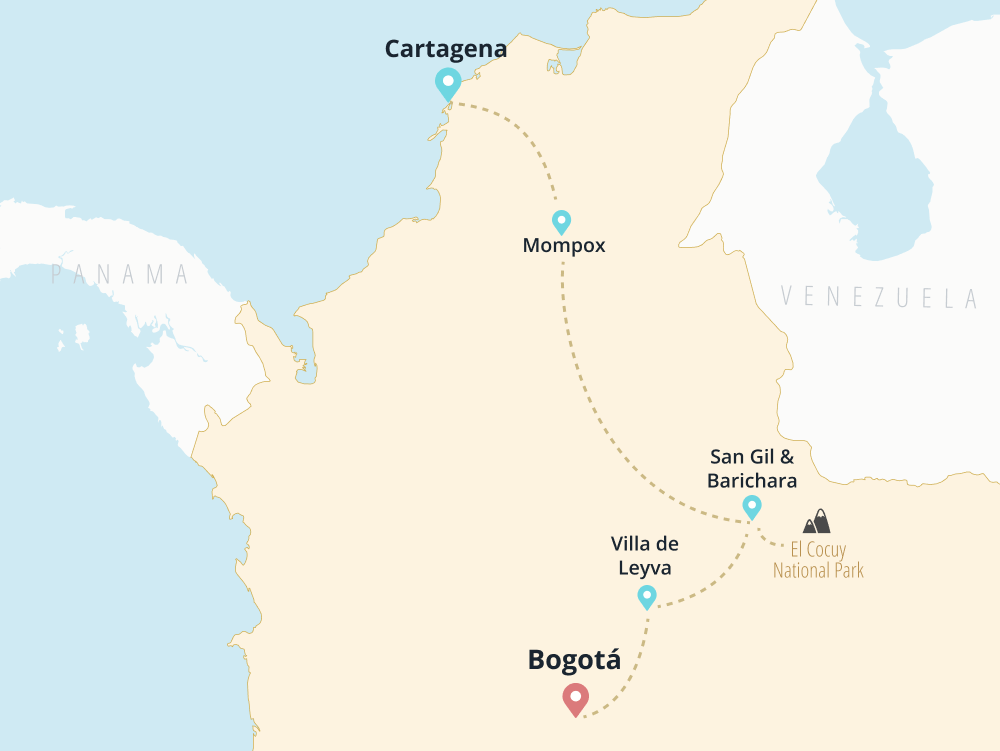
This itinerary is best if you enjoy outdoor activities, as San Gil is one of the best places for adventure sports like paragliding and rafting. Two of the cutest villages, Barichara and Villa de Leyva, are also on this route.
You can use this itinerary to glue together different sections of a Colombia trip or consider it in its own right.
Suggested minimum time: 10 days with Bogota or 1 week without
Mompox (2 days)
I missed out on Santa Cruz de Mompox on my trip, but I later realized it would have been perfectly on the way. It’s about 8 hours from Santa Marta or 6 hours from Cartagena. This quiet colonial town and UNESCO World Heritage site gets recommended by a lot of travelers. I’ll refer you to this great blog about Mompox for more info.
San Gil (2-3 days)
It’s about 10 hours from Mompox to San Gil. As I skipped Mompox I arrived from Santa Marta, which took about 13 hours (I did it as an overnight trip.)
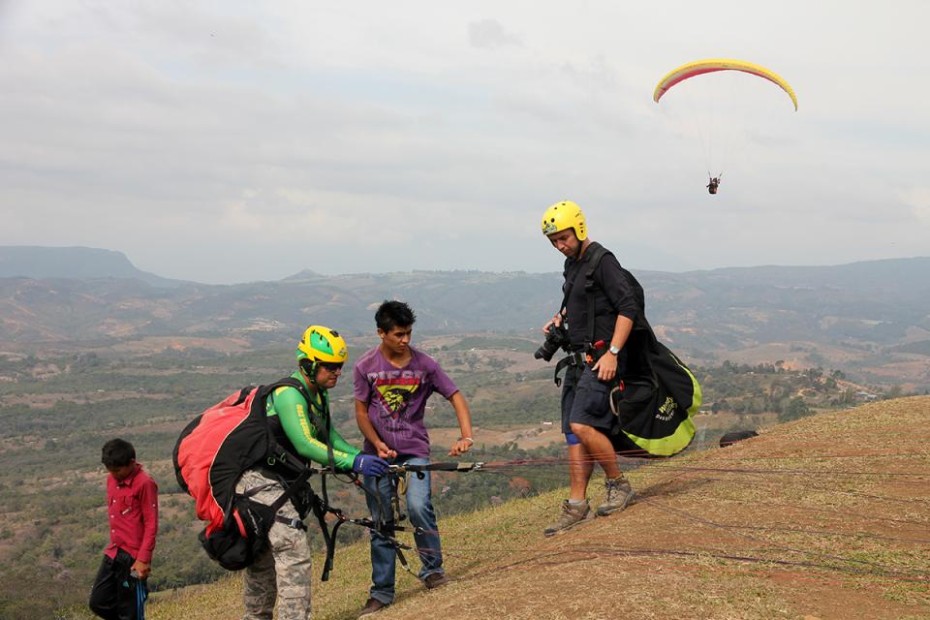
San Gil is the adventure sports capital of Colombia. The small city earned this reputation mainly thanks to the many river rapids that are excellent for rafting, but you can also go paragliding, bungee jumping, canyoning, zip-lining, and mountain biking in the mountains around this small city.
Don’t miss the local delicacy: the giant-ass ants. They fry ‘em up with a bit of salt and then you can eat them like popcorn.
El Cocuy (1-2 days)
On the edge of central Colombia, this national park comprises a mountain range with snow-covered peaks and glaciers, beyond which lies the start of the Amazon rainforest.
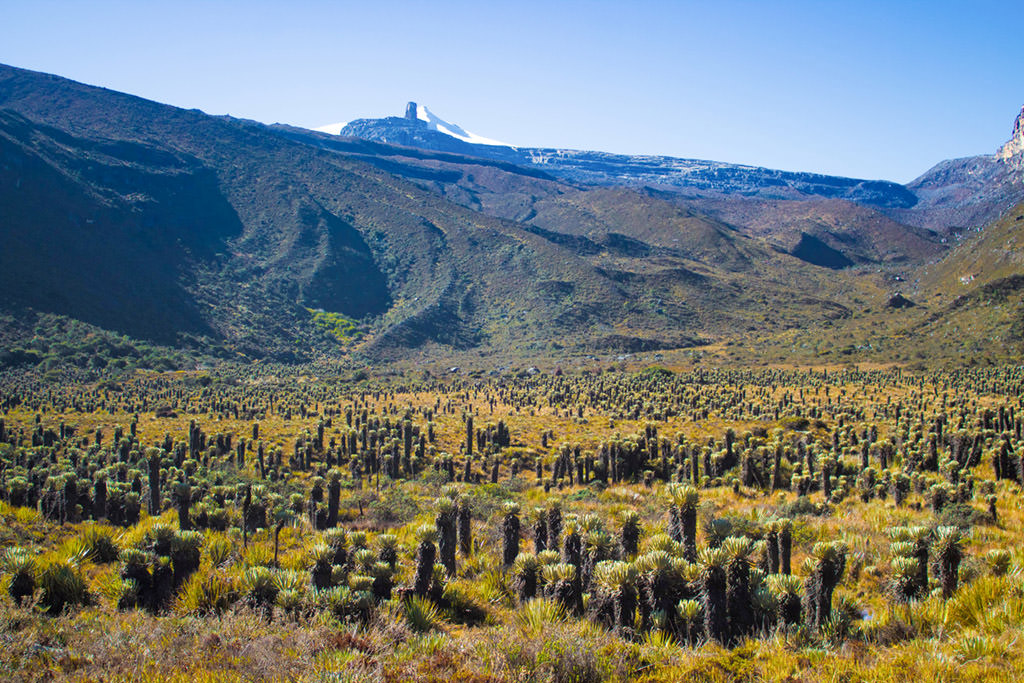
It’s a spectacular area for day hikes and multi-day treks, giving you the chance to spot mighty condors and traverse otherworldly landscapes filled with fraijones — palmlike shrubs that vaguely look like big succulents.
Activities are easily organized from the town of El Cocuy (6 hours by bus from San Gil).
Barichara (1 day)
Being one of the prettiest little villages in Colombia, Barichara really has a way of stealing travellers’ hearts. Just a 40-minute drive from San Gil, these two places make for a perfect pair.
Mind you, it doesn’t necessarily have an endless list of things to do; mainly some small hikes, a viewing point, a church, and some local handicraft shops. But the white-washed colonial architecture makes strolling around Barichara a real joy. It’s worth an overnight stay to soak in the atmosphere.
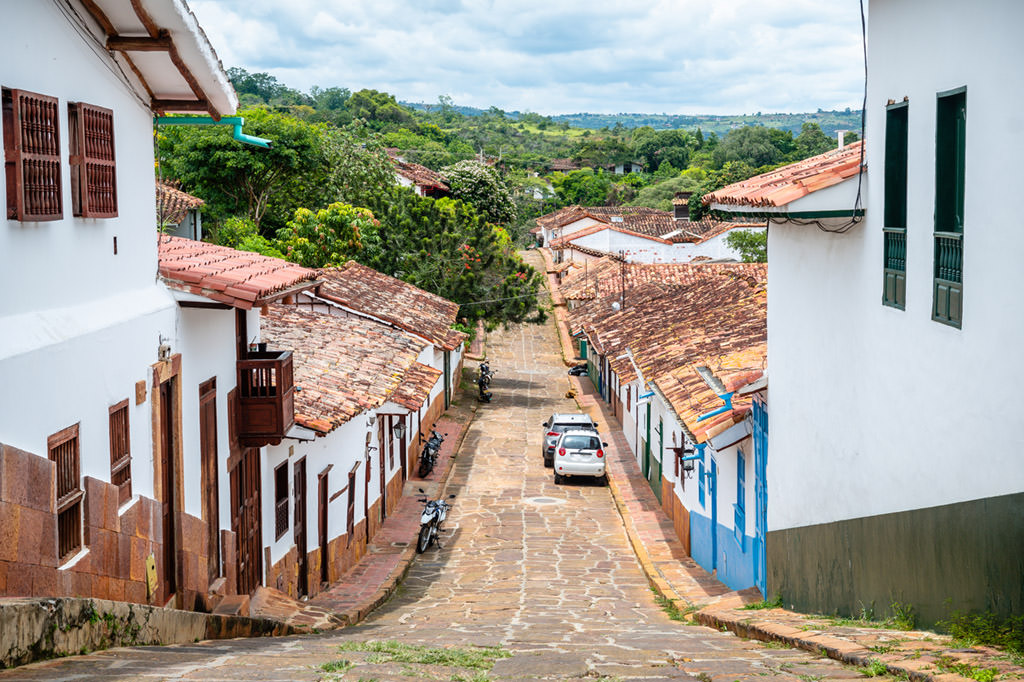
Villa de Leyva (2 days)
This charming town is one of the few in Colombia that conserved all its colonial architecture. It’s a joy to stroll around its many cobbled streets with whitewashed buildings with tiled roofs. There are more activities in- and around Villa de Leyva than in Barichara, which is why I suggest staying here at least a day extra.
Bogota
It takes about 3 ½ hours from Villa de Leyva to Bogota by bus. Perhaps your trip already started in Bogota, but here’s your chance to give it a closer second look.
I find that Bogota sometimes gets negative comments from travellers who may have expected to see a more superficially beautiful city. Even though Bogota has a gritty appearance, there is a lot to love about it.
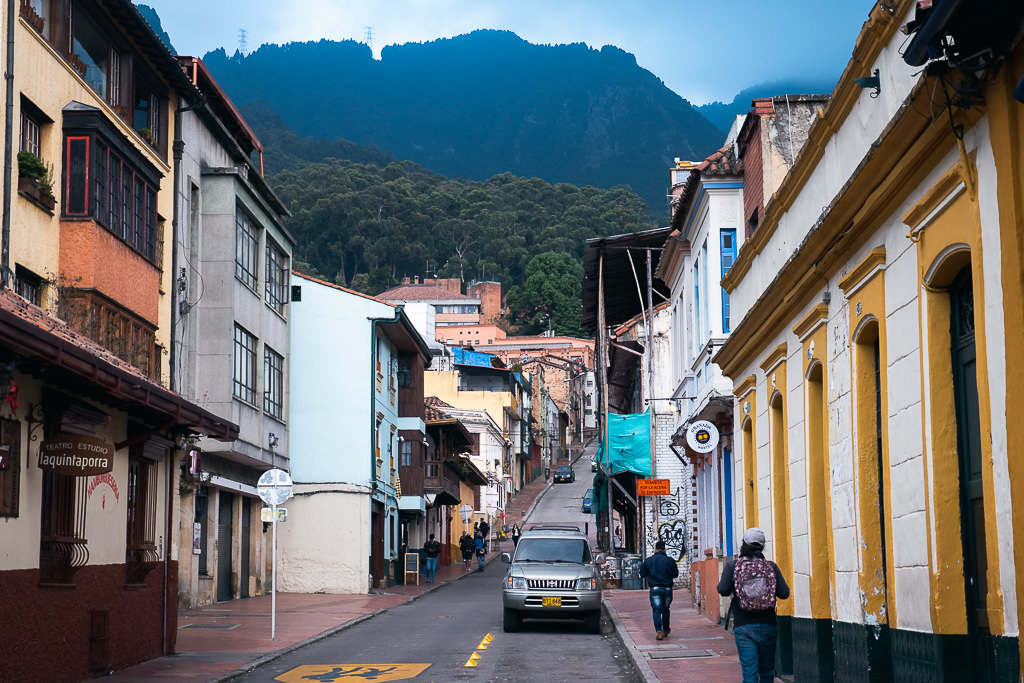
I make the case for Bogota here while sharing some tips on how to make the best of your time. Don’t miss the very good museums, taking a bicycle tour, or the daytrips from Bogota.
Itinerary 3: the Coffee region
The Zona Cafetera is a mostly mountainous region located between the cities of Medellin, Cali, and Armenia. Thanks to having the perfect coffee-growing conditions, it produces the majority of Colombian arabica coffee.
The region has a mild climate ideal for traveling year-round. Besides the authentic coffee towns with colonial-era architecture, there are some amazing nature areas as well. I love this region as it includes some of the classic images of Colombia.
Suggested minimum time: about 9 days (with Medellin), longer if including more coffee towns
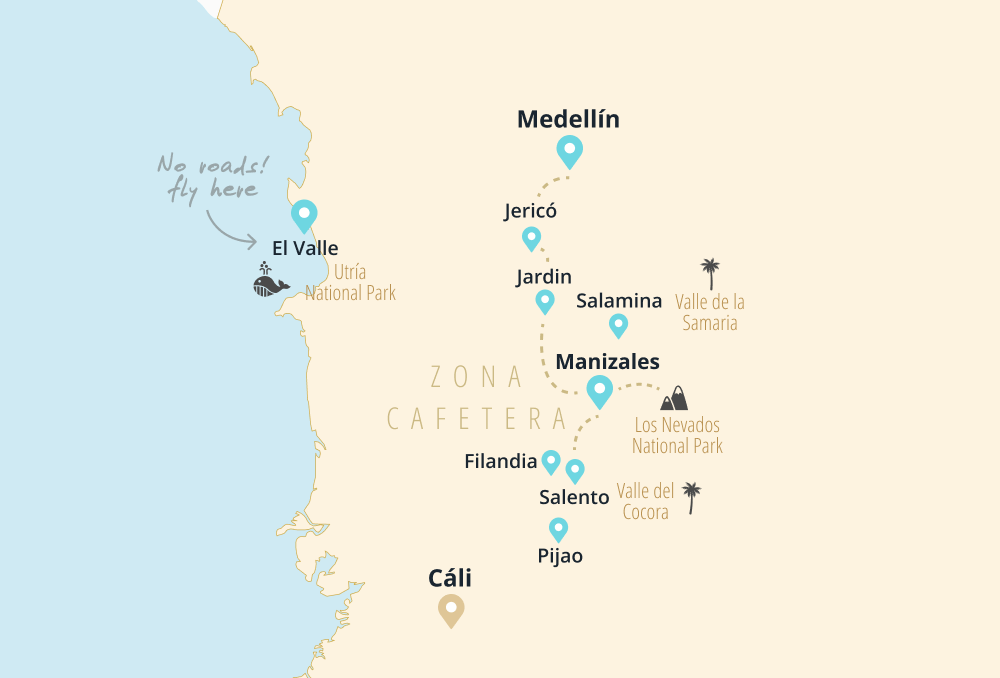
(Also shown on the map is the Pacific Coast, which can be a great add-on with flights leaving from Medellin. Consider this amazing destination during whale watching season, which is roughly from July until November.)
Medellin (2 days or more)
In the 1990s it was one of the world’s most violent places; today it’s a reinvented city highly worth exploring. To truly appreciate Medellin’s history and its remarkable transformation, make sure you take the Real City Tour Medellin. It’s still one of the best walking tours I’ve ever done. Make it the first thing you do! You’ll thank me later.
You can read more about what to expect from Medellin here.
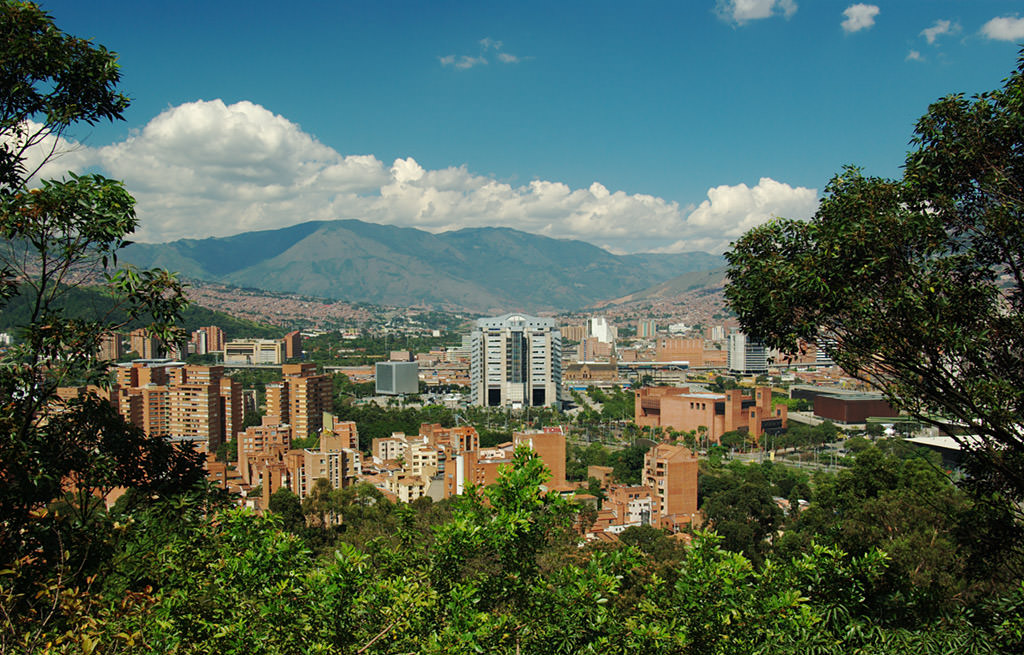
It’s also worth taking the cable car up to Parque Arvi or visiting Communa 13, which was once a bad neighborhood but is now a tourist destination and offers clear proof of Medellin’s transformation.
I suggest spending 2 days in Medellin to get a good taste of it, but you could stay longer to enjoy the nightlife or for day trips in the area. While lacking somewhat in major sights, Medellin is a very liveable city that attracts many expats and digital nomads. The upscale area of El Poblado (where many hostels and hotels are located) is pleasant and hosts many quality restaurants and cafes.
Jardin (2 days)
This gorgeous little town will give you a perfect introduction to the coffee region. It’s a lively and tourist-friendly place, yet authentic all the same (and not yet so discovered by foreign tourists). You’ll surely see some ranchers and coffee farmers wearing cowboy hats and ponchos, sometimes on horseback.
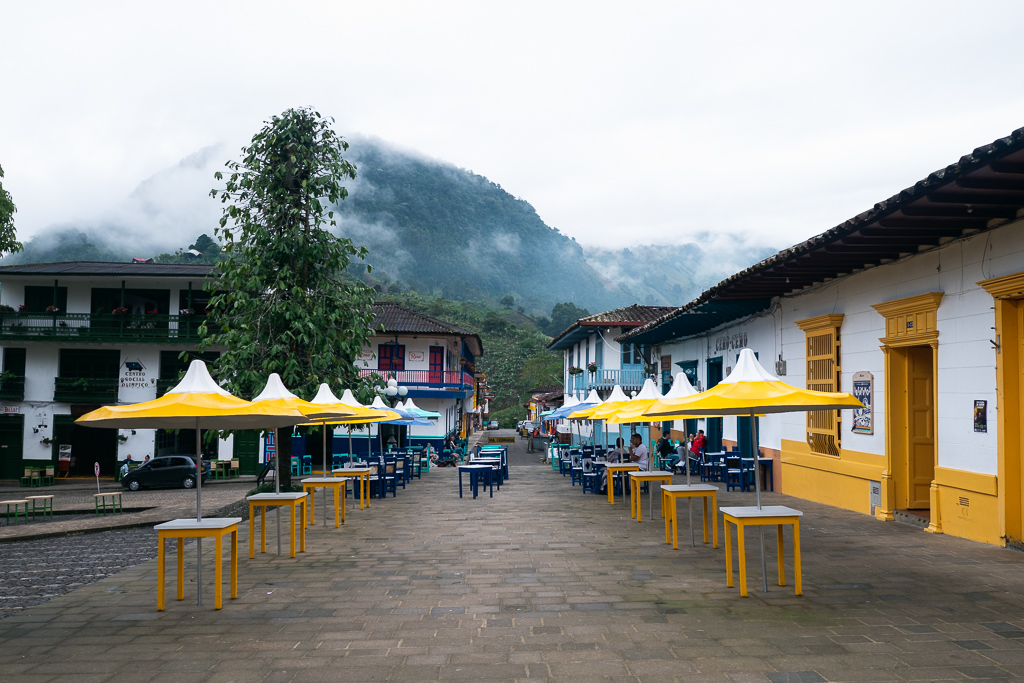
There is a lot to do in Jardin so you could honestly stay for 3 days to take it slow. There are hikes, waterfalls, coffee farm visits, birdwatching tours, horseback riding, and many more activities to choose from. Near the river are also many trout farms where you can enjoy freshly grilled fish.
The bus from Medellin to Jardin takes about 4 hours.
Manizales & Los Nevados (2 days)
Add some variety to your Zona Cafetera trip by leaving the lush coffee valleys for Manizales, a city at around 2,000m (6500ft) elevation. It’s not necessarily the most beautiful city but it’s relatively safe, has lovely mountain views, and is known as a vibrant university town.
It takes 6 hours to get there from Jardin; spend the afternoon in Manizales for a chance to see a real Colombian city without any of the usual gringo trappings. You won’t find colorful colonial architecture here, but it’s an interesting city in its own way.
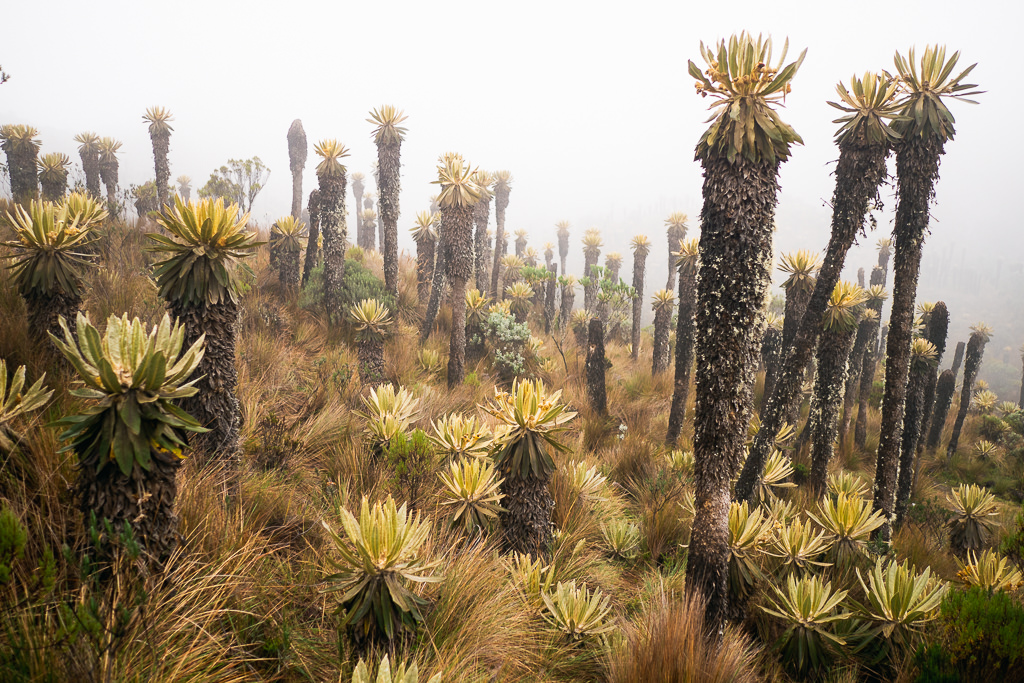
Manizales is the perfect base from which to take a full-day tour of the Los Nevados national park. You’ll see several volcanoes as well as a unique Andean ecosystem called the paramo. It can be quite cold in the mountains, but you can heat up afterwards by taking a bath in a hot thermal spring.
Salento (2 days)
Salento is the place from where you can see the wax palm tree, Colombia’s national symbol. The valley near Salento has numerous of these bizarrely tall palm trees, making for an impressive sight. You can hike through the valley or take a tour with a jeep and have a guided trek.
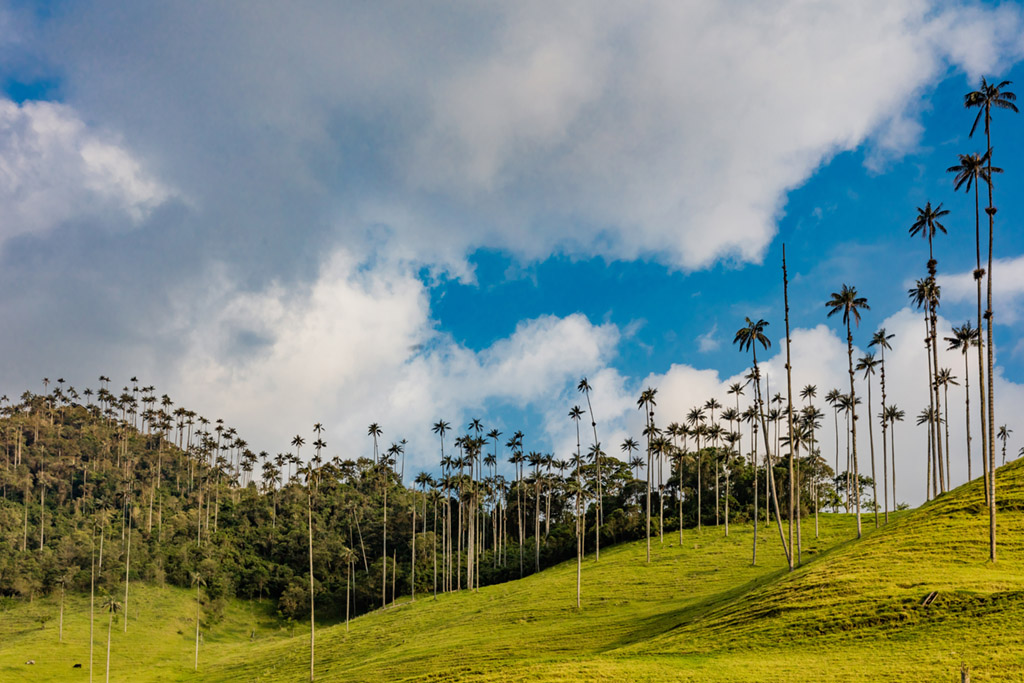
There’s a lot more to do in Salento so it’s nice to stay for a while. Don’t miss your chance to play tejo at Los Amigos. This is a Colombian ball-throwing game where the targets are rigged with gunpowder and it’s a ton of fun.
The bus from Manizales to Armenia takes about 2 hours. It’s another 40 minutes or so from Armenia’s bus station to Salento.
More in the Coffee Zone
The above places will give you the highlights, but there is so much more in the Zona Cafetera. I had a great time just hopping from town to town for two weeks. I’ve shared a more detailed itinerary for the Zona Cafetera with things to do in each town.
Because Salento gets quite busy these days, you may enjoy the alternatives to Salento. My favorite is Filandia, a town that’s a lot more laidback, but which still has lots of interesting things to do.
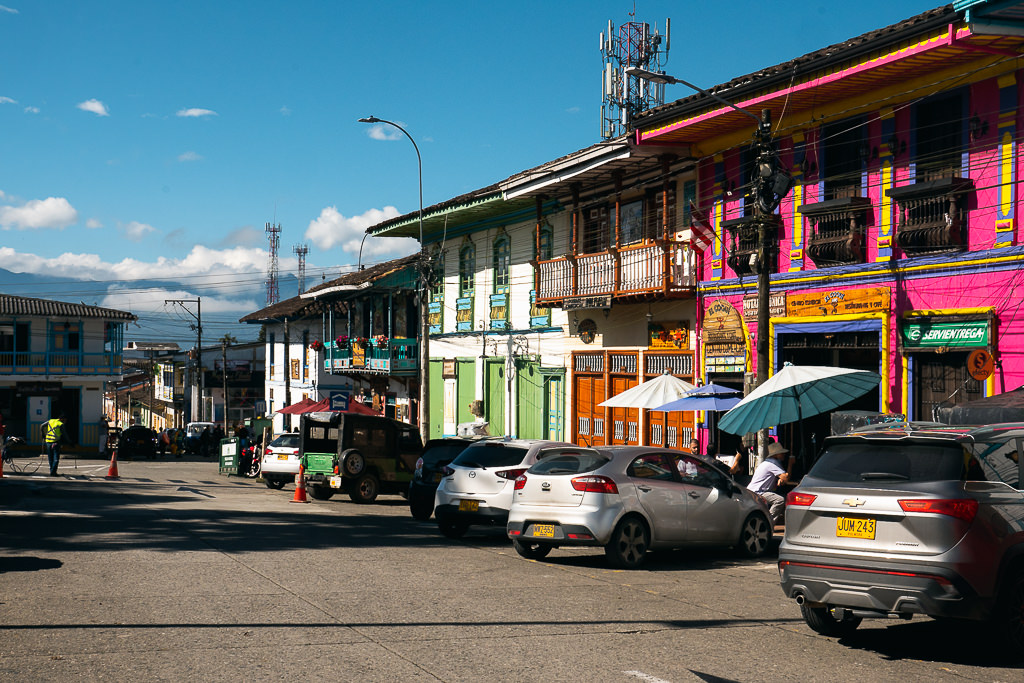
At the Barbas Bremen Nature Reserve you can take a guided jungle hike and have a good chance of spotting groups of red-haired howler monkeys.
If you enjoy very quiet but untouristy towns then I highly recommend Jerico, Salamina, or Pijao. Keep in mind that you won’t be greeted by huge menus of organized tours and activities upon check-in at your hotel, as you might in more touristy places. But if you can find your own hiking trails, enjoy watching the street life, or you can do your own research to find the activities available, then these towns are truly some of the hidden gems in the Zona Cafetera.
Itinerary 4: southern Colombia
The southern parts of Colombia are less explored, not for a lack of sights but mostly because it’s further removed from where most travelers start their trips. It’s a little more off the beaten path and a rewarding part of Colombia to explore. Some sights are worth it especially if you’re on a longer trip and on your way to Ecuador.
Suggested minimum time: 10 days
Cali
It should be said that Cali has a worse reputation for safety than other cities. The ‘Cali cartel’ no longer exists, but it’s still a hub for narcotrafficking. Still, the bad bits of Cali are in the northern and eastern suburbs and are mostly well away from the center. Having built up a caricature of Cali in my mind, I was surprised to find central Cali is actually very inviting and liveable. (Check out El Penon or the area around Parque del Perro.)

Cali is famous for being the salsa dancing capital of Colombia. If you ever wanted to take classes, do it here! The salsa bar scene is highly social and inviting. Do take taxis back to your accommodation at night for safety.
San Agustin
This colorful village is famous for its many enigmatic pre-Colombian statues that are scattered throughout the landscape. Seeing these archeological finds will involve quite a bit of walking as they’re quite spread out. The ancient civilization that left all these works remains shrouded in mystery.
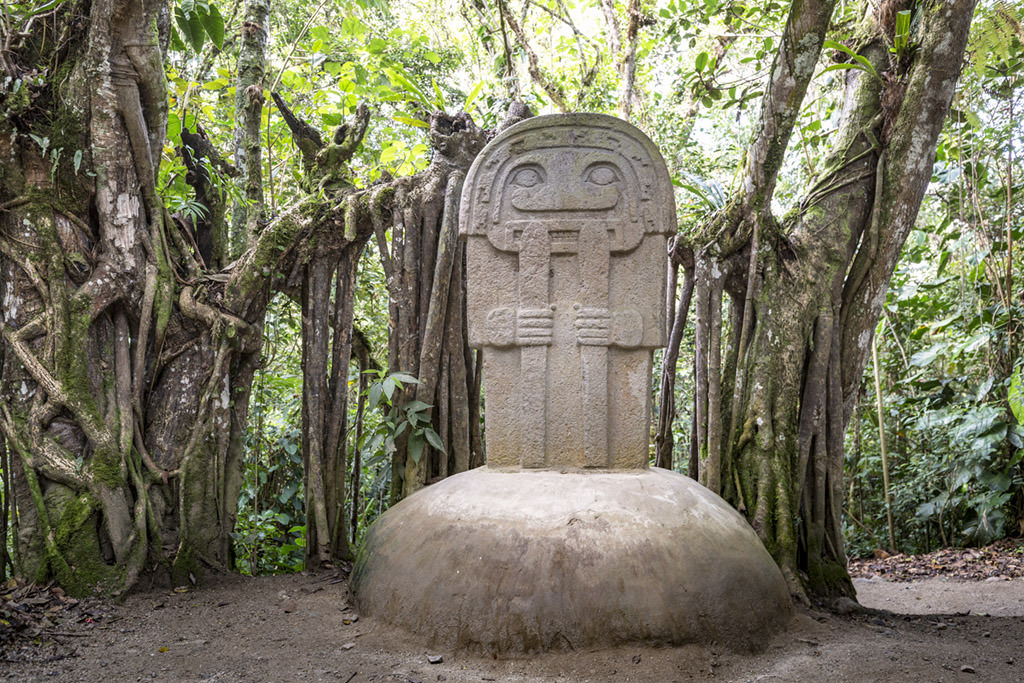
The statues are far from the only attraction. There are many hikes, viewpoints, and waterfalls to visit and jeep tours can show you some of the more remote sights. There are at least half a dozen very well-rated hostels in San Agustin, including the Masaya San Agustin, which is closer to an ecolodge with a range of comfortable bamboo houses built in the native style.
Popayan
Thanks to its many well-preserved white colonial buildings, gorgeous Popayan is known as the “white city”. With a population of around 220,000, it’s a great mid-size city to explore, having a good reputation for safety as well. You can stroll the streets, shop for handicrafts, and enjoy its many churches, plazas, and parks. If you’ve just had some action-packed travel days, then the nearby thermal pools will let you relax and recover.
There isn’t necessarily an endless list of things to do, but Popayan is a nice gentle city to spend some time and to use as a base for day trips. One such trip is to Silvia (described below), another Parque Natural De Puracé where you can witness an active volcano.
Silvia
The small town of Silvia near Popayan is notable for its large population of indigenous people, principally Guambiano Indians. The authentic market in Silvia is where you can see many sellers wear traditional black bowler hats and colorful ponchos. It’s a style of dress more commonly seen in Peru or Bolivia, so if you’re looking for an Andean atmosphere in Colombia, this is the place to find it.
You may want to visit the market on a trip from Popayan with a good guide to gain more of an understanding of the local culture and traditions.
Tatacoa Desert
In Tatacoa you’ll find yourself in amid an arid expanse, home of vultures and eagles, with the start of the Andes mountain range visible off in the distance. A labyrinth of rocky canyons formed by years of erosion is the main attraction here — it’s a surreal little place to wander, though it won’t take more than an hour or so.
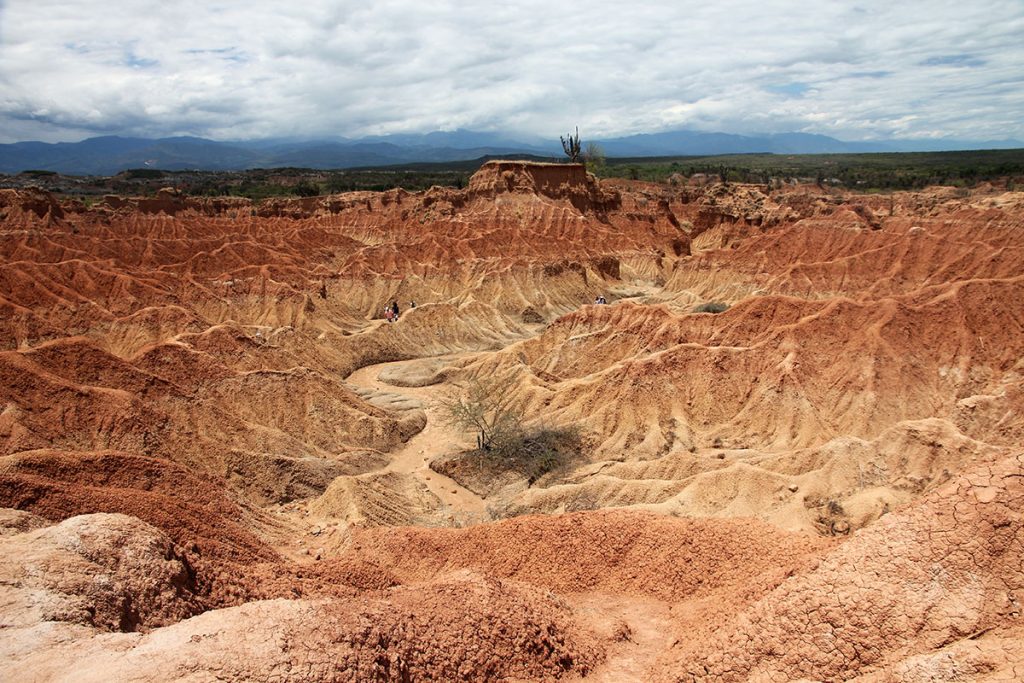
Due to the low light pollution, it’s also a perfect spot for stargazing. At the local observatories, some resident astronomers give nightly tours of the universe. Despite a lot of clouds I still saw Jupiter through a telescope which was very fascinating. Descriptions of the expansion of the universe and such were a bit much for my limited Spanish at the time, but it was a great experience nonetheless.
Tatacoa was once in Lonely Planet’s top places to visit listed at the start of its guide. Perhaps this was due to fewer other places yet being safe in the past. I wonder if this may have overhyped Tatacoa a bit, but I still think it’s worth staying for a day or a night.
Las Lajas Sanctuary
Finally, you can hop over to Ipiales, near the border with Ecuador. It’s definitely worth visiting if you’re heading to Ecuador anyway, but whether it’s worth a trip in its own right is debatable as it takes you a bit far from the Colombia travel trail. The big attraction here is the Santuario de las Lajas, a cathedral spectacularly built on a bridge over the Guaitara river.
Colombia itinerary extensions
The above routes include destinations that are nicely clustered together. But there are also more remote places that are a bit disconnected from everywhere else. They can be thought of as great “add-ons”.
Pacific Coast
Remote and unconnected by roads, the Pacific Coast is a truly wild part of Colombia. If you go there between July and November, you’ll be there at the right time to see numerous humpback whales. If you’re intrigued, read my guide to Colombia’s Pacific coast.
By the way, the Pacific Coast is among the world’s rainiest places, so do pack your rain coat and luggage rain cover. If hearing this demotivates you at all to go, I should also say it is hands down my favorite place in all of Colombia. The nature is incredibly wild and unspoiled and the small Afro-Colombian communities along the coast are a delight.
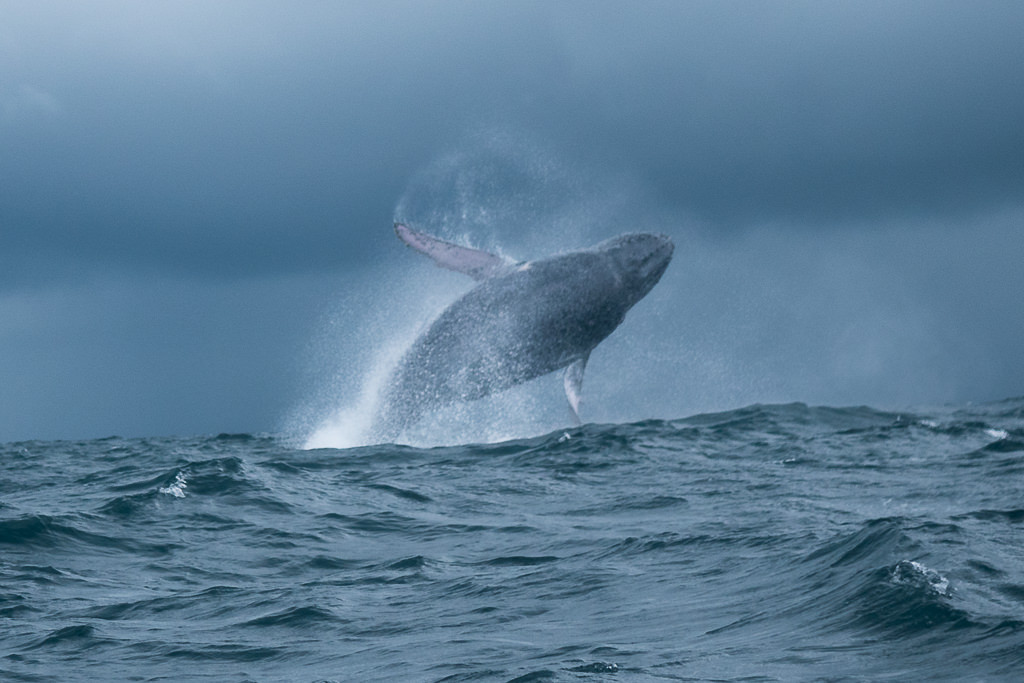
Accommodation is a bit more basic on the Pacific Coast. Villages are supplied only once a week by cargo boat, so prices for food or other good can be a bit higher than in the interior. It typically takes a propellor plane flight from Medellin to get there, but you will be rewarded for the effort. While quite remote, known destinations in Choco such as Bahia Solano and Nuqui are considered safe.
Into the Amazon
35% of Colombia’s territory is covered by the Amazon Rainforest. Going into it used to be quite a risky proposition, but since the 2016 peace accord with the FARC rebels, the Amazon region has been opening up for all kinds of ecotourism.
The town of Leticia, on the border with Peru and Brazil, used to be the only game in town for Amazon tours. It’s still a good bet as you have many flights there from Bogota and it’s a well-established destination.
More recently the town of San José del Guaviare has become another option. You can fly there or reach it overland by bus via Villavicencio. It used to be a dangerous place but no longer is, yet it’s still not nearly as well-known as Leticia. (Be sure to take trips from San Jose with reputable tour companies, however.) The Cano Canoes waterfalls are very hard to get to but are one of the ‘secret’ places in Colombia. Ancient cave paintings are another kind of sight found deep in the jungle.
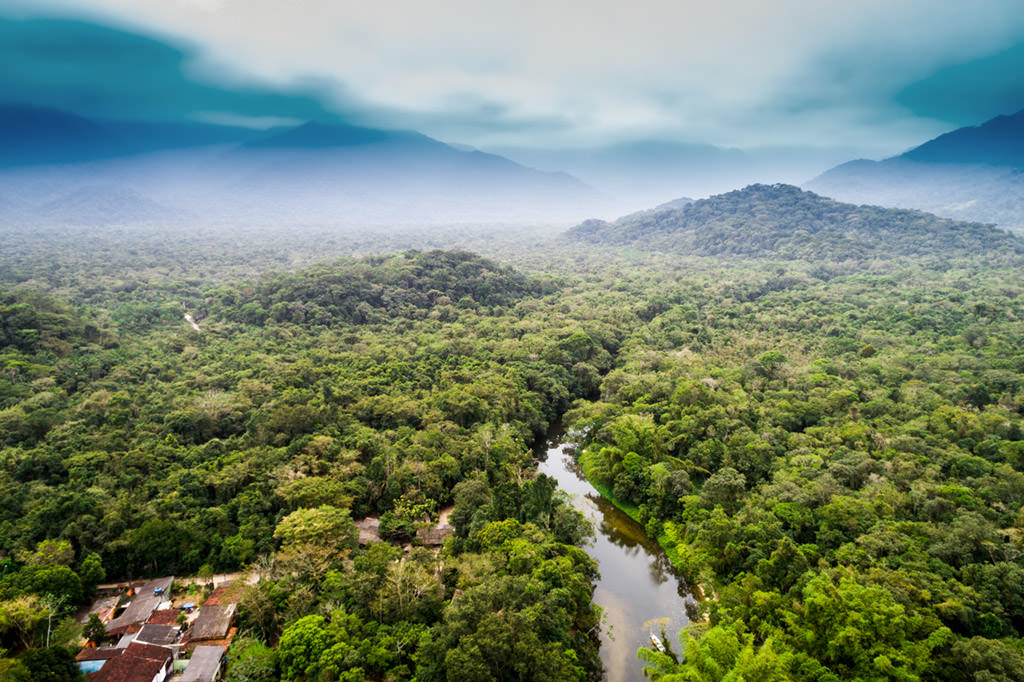
Other destinations in the Amazon are difficult to get to independently. At the Cerros de Mavecure, you can climb two hills made of dark volcanic rock and enjoy views of the rainforest as far as the eye can see. But you’ll have to check with local tour companies (such as Colombia Oculta) for organized expeditions to such places.
The Darien Gap
Nope, I’m not suggesting you should go hang out in the thickly jungled borderlands between Panama and Colombia, known for its drug-smuggling routes and its many dangers. However, there are some beachside villages near the Darien Gap, such as Capurgana, that are known to be safe while still being off the usual travel routes in Colombia.
The beach towns are too far removed from other destinations to easily justify just going there on their own, but they can make for a perfect stop if you are coming from Panama.
Some links may be affiliate links, meaning I may earn commission from products or services I recommend. For more, see site policies.
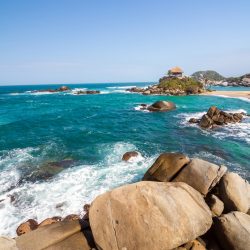
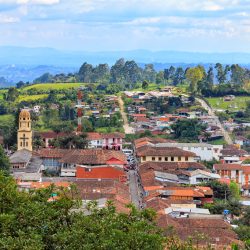
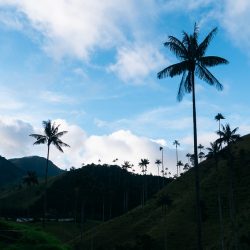
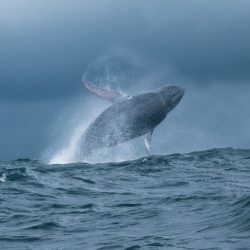
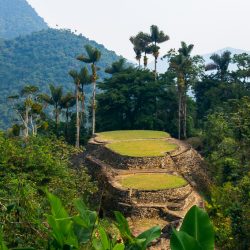
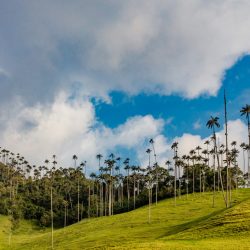




This is very cool! Going to Santa marta & Medellin in July so I will be using your tips. Curious… can you tell me about the picture at the top of this webpage?? It’s gorgeous! Wondering if I will see this in person on one of my days in Colombia!
That’s the town of Guatape, which can be reached from Medellin!
My goodness, I’m so happy I found you! We’ll spend one month in Colombia and it’s not easy to put the destinations together. THANK YOU so much for sharing, it really helps a lot!
😀 Glad to be of help! Hope you have an excellent trip
Thank you for sharing this. I have difficulty creating my itinerary and this helps a lot!